‘Unfortunately’, writes Marja Sakari, director of the Ateneum Art Museum in Helsinki and co-curator of its new exhibition ‘Colour & Light: The Legacy of Impressionism’, ‘there is not a single Impressionist painting in the collection of the Finnish National Gallery’. More specifically, none of the works by Degas, Monet, Pissarro, Renoir, Signac or van Rysselberghe exhibited in ‘Colour & Light’ alongside works by artists from, or associated with, Finland are held in the national collection. There is significant regret beneath this remark: in 1904, the Ateneum showed the Impressionists (among others) to a sceptical Finnish public. Only 1,700 visitors saw the month-long show, which was mocked by the press.
While the museum might at that time have purchased any number of the spectacular pictures on display, Pierre Puvis de Chavannes’s relatively conservative pastel Model (n.d.) was their primary selection. Model is included in the current exhibition, but the curators have positioned it as a pallid detour in the history of Finnish interest in Impressionism. As they show, Impressionism did take off in Finland, influencing and shaping the imagination and practice of a generation of early 20th-century Finnish artists. Viewing Model alongside Tyko Sallinen’s starkly expressionistic Nude (1910), Pekka Halonen’s sun-drenched Going for a Swim (1910) or French artist Maurice Denis’s strange, naïve Odysseus with Calypso (1905), which the Ateneum bought in 1911, it is clear that in the years after the Impressionist exhibition there were dramatic changes not only in the practices of Finnish artists but also in the sensibilities of the art establishment. ‘Colour & Light’ offers visitors the invaluable opportunity to see that transformation happening before their eyes.
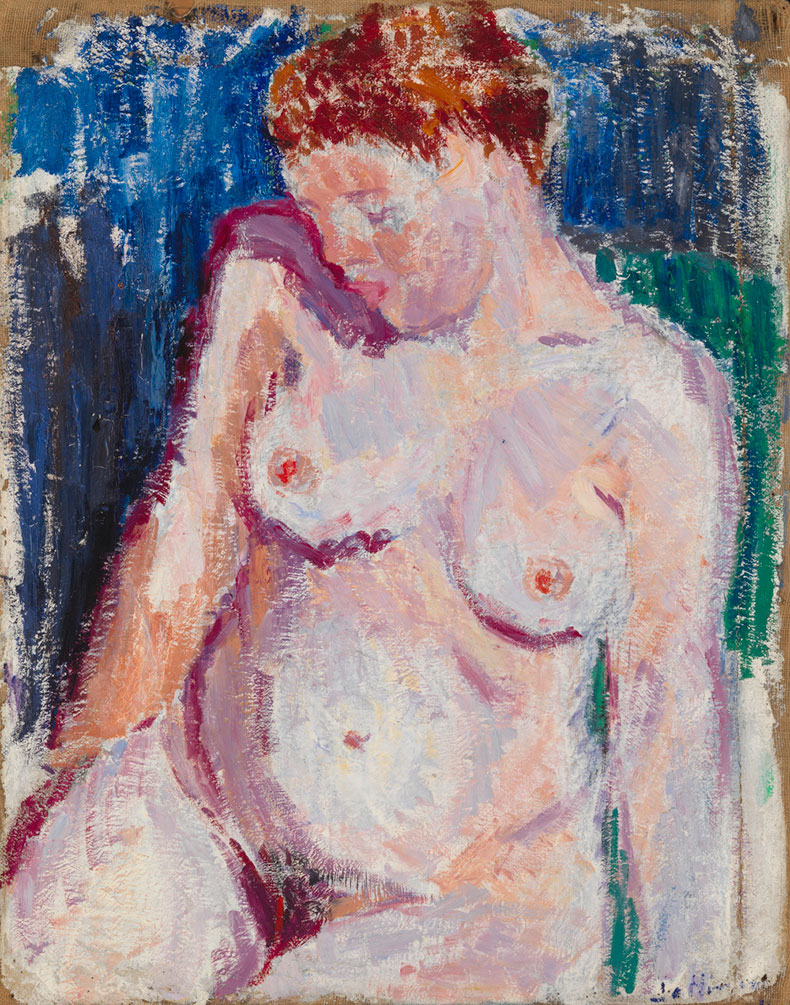
The Nude (1910), Tyko Sallinen. Finnish National Gallery/Ateneum Art Museum. Photo: Finnish National Gallery/Hannu Pakarinen
The show is thematically arranged with Impressionist works by better-known European painters placed alongside those by Finnish artists, establishing lines of influence in subject and technique. Paul Signac’s pointillist seascape Cassis, Cap Lombard, Opus 196 (1889) can be measured against a similar piece, The Cliffs of Dover; The Cliffs at South Foreland (1892) by Helsinki’s Impressionist guiding light, Alfred William Finch. Born in Brussels to British parents, Finch spent most of his creative life in Finland. His involvement with the Belgian group Les XX laid the groundwork for both the Ateneum exhibition in 1904 and the later Finnish collective Septem, and his presence hovers over this exhibition. In room after room, he conjures shifting modes of Impressionism to suit his cosmopolitan life – by 1910, with Rosehearty Pier, he jettisons Signac’s influence for a more fluid style closer to van Rysselberghe, whose Surf on the Côte d’Azur (1904) hangs nearby.
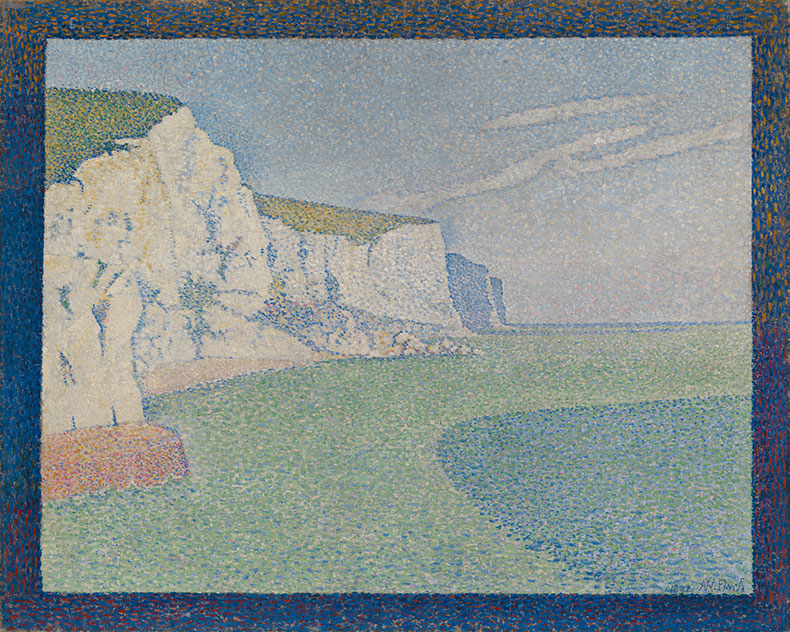
The Cliffs of Dover; The Cliffs at South Foreland (1892), Alfred William Finch. Finnish National Gallery/Ateneum Art Museum. Photo: Finnish National Gallery/Aleks Talve
Most interesting of all are the moments when Finnish artists retool Impressionist techniques to suit the particular qualities of colour and light in their own landscapes. The stained-silk suppleness and luminosity of Halonen’s large-scale diptych, Rock Covered in Ice and Snow (1911), or his Sunlit Winter Landscape from the same year, can be read polemically against Monet’s wonderful but muted Floating Ice on the Seine (1880). While the subject of Halonen’s Going for a Swim shades her eyes, Verner Thomé’s large-scale Bathing Boys (1910) look directly into a light so bright and direct that it threatens to dissolve the figures clustered at the water’s edge. A year later, Thomé returned to an evening version of the same scene in Boys on the Shore (c. 1910–11), exchanging lead white for a cooler palette, and pointillism for something closer to the Fauvist whorls of In the Borély Park (1909), the painting which closes the exhibition.
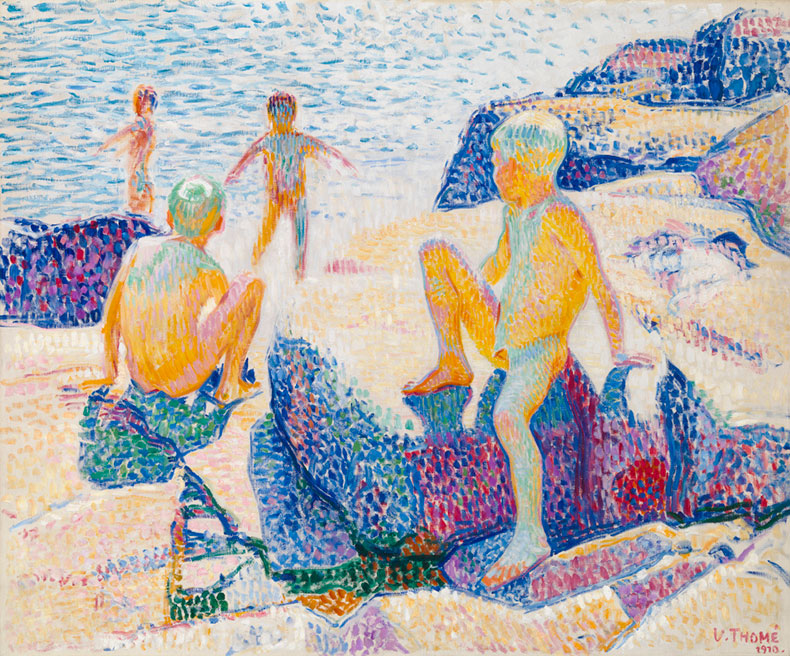
Bathing Boys (1910), Verner Thomé. Finnish National Gallery/Ateneum Art Museum. Photo: Finnish National Gallery/Aleks Talve
Other ways of responding to influence are on display here, too. Tyko Sallinen, whose debts to Fauvism and colour expressionism are evident, is at the same time totally peculiar in his use of light and colour. Consider Pale Sun (1911), which contains a sun so dim it can be looked at directly, or the contorted figures of The Washerwomen (1911), whose hard shadows and positioning in the frame make them look as though they are about to topple on to the gallery floor.
Ellen Thesleff’s wonderfully chaotic landscapes also do something new with Impressionist techniques. The saturated greens of pictures such as Landscape (1912) or Decorative Landscape (1910), for example, where the trees look like they have been caught between panes of glass and pressed, repudiate the pixellated colour separation of post-Impressionism. The joyful pastel swamp of Landscape from Tuscany (1908) retains the Impressionist sense of a person in a place observing, even as it approaches abstraction. It was my favourite piece in the exhibition.
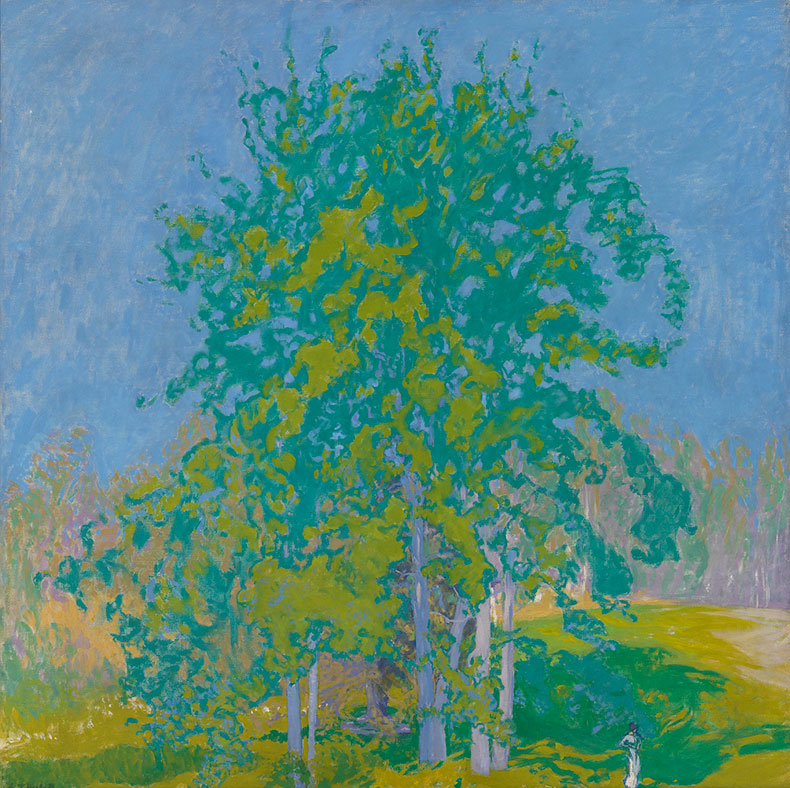
Decorative Landscape (1910), Ellen Thesleff. Finnish National Gallery/Ateneum Art Museum. Photo: Finnish National Gallery/Yehia Eweis
Impressionism, as we encounter it here, is belated. A journalist visiting the 1904 exhibition observed: ‘The period of upheaval shown by Impressionism has been and gone. The representatives of the movement are dead or obsolete’. By then, post-Impressionism was already giving way to subsequent artistic movements elsewhere in Europe. But it was another half decade before Finnish artists fully embraced the luminosity and formal flexibility Impressionism allowed. When the movement arrived in Finland, it was already a matter of influence and reconfiguration. ‘Colour & Light’, the first major showing of Impressionists in Finland since 2008, captures an origin that is caught up in fascinating ways with interpretation and resistance – and in doing so, it discovers new ways of seeing familiar things. The stylistic eclecticism and experimentalism, not only of this exhibition taken as a whole, but within the practices of individual artists, show the advantages of coming to a movement belatedly.
‘Colour & Light: The Legacy of Impressionism’ is at the Ateneum Art Museum, Helsinki until 25 February 2024.
Unlimited access from just $16 every 3 months
Subscribe to get unlimited and exclusive access to the top art stories, interviews and exhibition reviews.

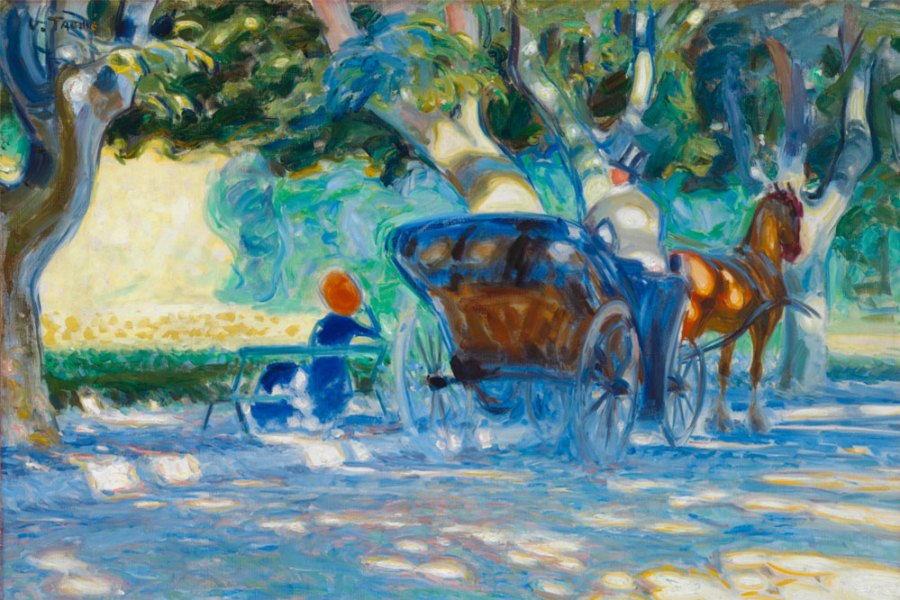
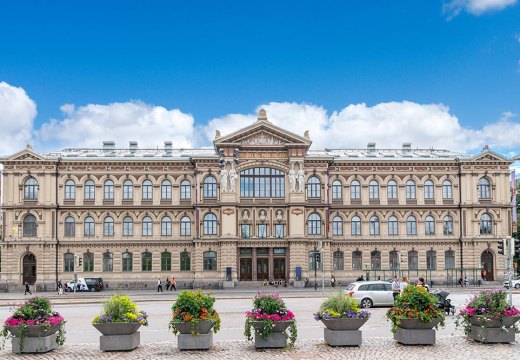
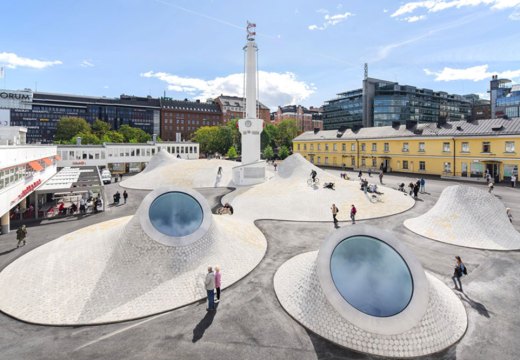
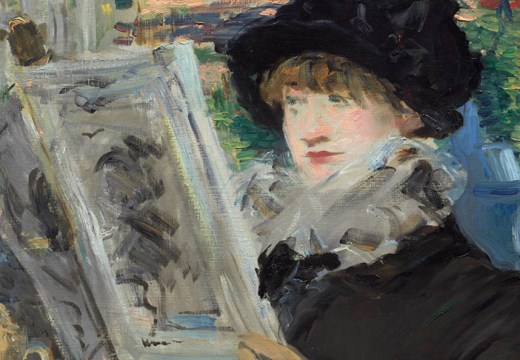









![Masterpiece [Re]discovery 2022. Photo: Ben Fisher Photography, courtesy of Masterpiece London](http://www.apollo-magazine.com/wp-content/uploads/2022/07/MPL2022_4263.jpg)
Has arts punditry become a perk for politicos?